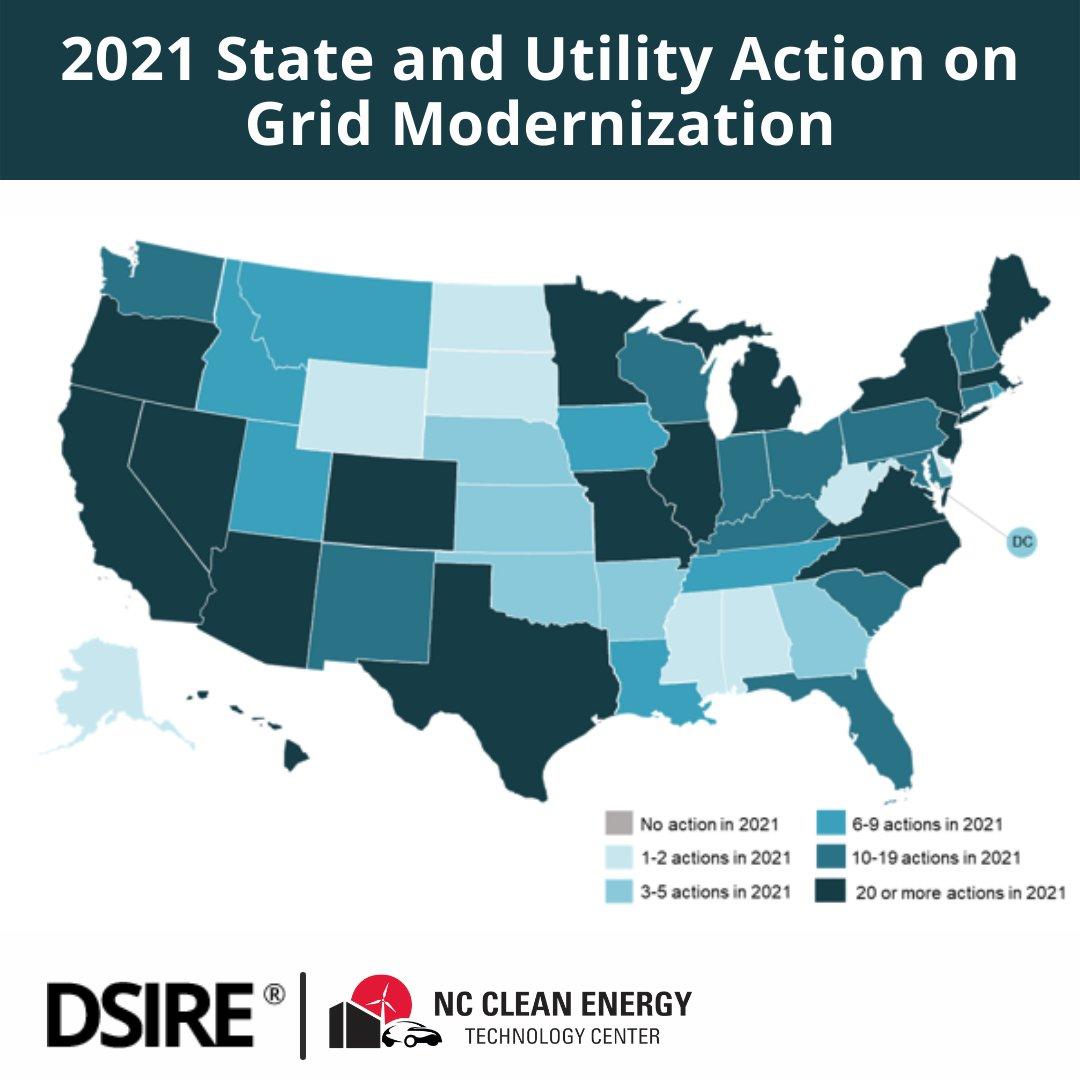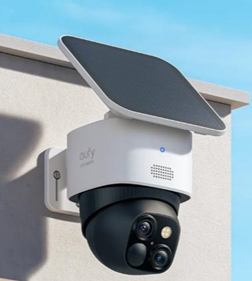To meet the energy transition's urgency and complexity, utilities have proposed big modernization investments in their distribution systems, but regulators and customers want to know if the spending is necessary.
There were 498 grid modernization-related policy and deployment actions in 48 states in Q3 2021, but regulators approved only $904.4 million of the $14.7 billion in proposed utility investments, according to the most recent North Carolina Clean Energy Technology Center (NCCETC) "50 States of Grid Modernization" report. Some $12.7 billion was held for closer scrutiny, with $1.1 billion rejected.
Of approximately $432 million in capital expenditures proposed by Southern California Edison (SCE) for grid modernization from 2019 to 2021, the California Public Utilities Commission approved about $426 million in August 2021 (21-08-036), according to SCE spokesperson Jeffrey Monford. The ruling showed regulatory support for the proposal, he added.
But the commission held the utility’s proposed $360.9 million in 2022-2023 spending for review in its next general rate case, consistent with the stepwise approach to grid modernization approvals identified by NCCETC.
SCE's investment plans for a Grid Management System (GMS), software, and automation capabilities complied with commission "directives" for integrating distributed energy resources (DER) to defer "infrastructure investment," the commission acknowledged. But despite "compelling" SCE arguments, the decision limited spending for unproven automation technologies.
SCE's "technology advancement and deployment" to improve reliability and enable higher DER penetrations began with 2014 commission directives, SCE Vice President, Asset Strategy and Planning Erik Takayesu responded. SCE will expand "foundational capabilities" and work with what was approved toward greater "system automation" with its GMS and a distributed energy resource management system (DERMS), he added.
Modernization is also critical to DER providers.
A "private sector ecosystem" of DER providers is "putting smart devices and distributed generation in customers' homes," Generac Grid Services President Bud Vos said. Advanced grid management and communications systems are needed "to bring that ecosystem of devices to utilities" and allow it to capture full value for "their systems and their customers."
But that technology is costly and will take time to deploy. "Stepwise" spending on system modernization is the better regulatory approach because previous smart meter deployments did not pay off, some stakeholders said. Regulators' caution could, however, fail to provide utilities with the system modernization needed to manage shifts in customer demand and to respond to climate change, changing customer demand and the changing climate, others warned.
The policy perspective
Utilities' failure to realize promised dispatch efficiencies and cost savings from the advanced metering infrastructure (AMI) investments funded by 2008 economic stimulus money "left commissions wary" of unfamiliar technologies, said Advanced Energy Economy (AEE) Managing Director Ryan Katofsky.
But those AMI investments produced data that justifies today's grid modernization spending, Katofsky said. That wariness initially kept New York and Massachusetts from deploying AMI statewide, but both states now see it as the basis of distribution system platforms that allow new customer-owned DER technologies to support system reliability by integrating "hardware and software in the utility control room," he said.
Modernization of utility distribution systems with AMI, GMS, DERMS, communications systems, and automation have begun transforming the "one-way" power system into "an interconnected web" of generation and smart devices, NCCETC's Q3 policy update, published in October, observed.
Three of the NCCETC policy update's top five policy actions were grid modernization spending proposals, but "cost is the issue," North Carolina Clean Energy Technology Center (NCCETC) Senior Policy Program Director Autumn Proudlove acknowledged. "Regulators tend to prefer a stepwise, phased approach, which got targeted investment plans approved while only parts of bigger proposals were approved."
Proposals by Eversource Energy and National Grid in Massachusetts, by SCE, by Dominion Energy in Virginia, and by Duke Energy in North Carolina were comprehensive, multi-technology grid modernization plans, Proudlove said. The Massachusetts and Dominion cases are not decided, but only parts of the SCE and Duke Energy plans were approved, she said.

Another emerging grid modernization policy would increase access for customers and third-party aggregators to AMI and smart DER data through uniform secure data access standards and protocols, Katofsky and Proudlove said.
It builds on federal green button data sharing programs and is likely to accelerate when Federal Energy Regulatory Commission Order 2222 facilitating DER participation in wholesale markets is implemented, Katofsky said.
With better data access, third party aggregators "can manage DER and smart devices to reduce utilities' peak demand and save customers money," Proudlove added. "Utilities have legitimate security concerns about releasing AMI data, but where it is available, there have not been complications."
The utility perspective
Grid modernization will be needed to meet net zero emissions mandates and manage the changing power system, utility representatives agreed.
By 2045, SCE expects a 60% load growth, a 40% peak load increase, more than 20 million electric vehicles, and "millions of inverter-based customer devices," according to its December 2020 "Reimagining The Grid" white paper. With those changes, its focus must shift from "system-wide reliability" to meeting "multiple objectives based on specific and localized needs."
Grid modernization allows automated leveraging of system information with "advanced technology and system architecture" to reliably manage DER for meeting local needs and optimizing operations, SCE's Takayesu said.
The magnitude of investments in new technological capabilities required for SCE to be carbon neutral by 2045 and address climate change impacts "is uncertain but very large," he said. "We cannot yet be specific, but it will require layers of new system capabilities to orchestrate a system with needs ranging from large DER penetrations to growing wildfire threats."
Other utilities should not wait to see "operational vulnerabilities" before planning modernization investments, Takayesu added. The impacts of DER and climate change "will show up soon and will be substantial." Despite its best efforts, SCE needs to accelerate its pace of emissions reductions four times over to meet the state-set goal and bring its annual emissions to 260 million metric tons in 2030, he added.
A number of utilities are moving toward grid modernization investments and implementations.
Oregon's Portland General Electric (PGE) filed October 1, 2021, for a five-year, $11 million phase two of its Smart Grid Test Bed modernization pilot. It will test "the capabilities of DER or a virtual power plant to avoid or defer utility investments," said PGE Manager of Regulatory and Policy Strategy Jason R. Salmi Klotz.
The smaller phase one pilots required investments in DERMS platforms and showed future territory-wide DER penetrations will likely require technologies for "visibility into system assets" and "automated dispatch of DER for energy services when and where needed," Salmi Klotz said.
"Wholesale market levels of DER penetrations are definitely coming, especially because of the urgency created by climate impacts," Salmi Klotz said. "We are preparing to address them in a least cost manner that spreads the greatest benefit. It will come down to managing the distribution system and its resources."
Sacramento Municipal Utility District (SMUD) is "nearing the launch" of an advanced distribution management system (ADMS) and is "building out a DERMS" with software services provider OSI, said SMUD Manager of Distributed Energy Strategy Obadiah Bartholomy.
SMUD is less than three years away from having dispatchability of DER "for something like 10,000 to 20,000 customers," Bartholomy said. "The DERMS data from individual and aggregated DER will interface with our ADMS to provide visibility of the distribution system and the DERMS will inform the operator of the available DER tools to meet distribution system needs," he added.
Utilities will need "some kind of DERMS" to interface with existing management systems, Bartholomy added. The visibility "enables operator decisions on complex systems with customer-owned devices" responding to many system conditions.
To create price signals that serve utilities and DER owners and aggregators, SMUD, Arizona Public Service (APS), Duke Energy and others are also working toward technology neutral DER tariffs.
That is "the direction DER tariffs need to go to eliminate technology silos," said Lisa Schwartz, a senior program manager at Lawrence Berkeley National Laboratory, which is providing technical assistance to Arizona regulators. Technology-neutral tariffs can compensate "all energy, capacity, locational, and ancillary services values from DER for participating and non-participating utility customers."
Opposing voices
Some analysts say the high cost of grid modernization investments may not be needed for utility distribution systems to leverage the value of DER.
Separate grid modernization expenditures are not necessary if the right distribution system planning practices are in place, said Paul Alvarez, president of utility consultant Wired Group. "Every market is different," but the billions of dollars in grid modernization proposals "must be carefully evaluated for their need and their consequences."
"I have yet to see any concrete evidence that grid modernization paid off."
Ahmad Faruqui
Brattle Group, principal
State legislation has imposed grid modernization investments on regulators, Alvarez said. Where that has been done, "it did not improve reliability and it weakened consumer protections by reducing regulators' control of utility spending," he added.
The "flexibility and visibility from advanced technologies like DERMS" may eventually be needed, he acknowledged. But "realistically, new capabilities will not be needed next week" and a too-rapid transition "could strand costly infrastructure," he said.
"I have yet to see any concrete evidence that grid modernization paid off," agreed Brattle Group Principal Ahmad Faruqui. "The challenge for customers now is rising rates, and expecting them to pay higher bills is not realistic when 10% or more of the least affluent customers' income is already going to electricity and gas."
Reliability against load and supply variability and resilience to climate-driven extreme weather events are needed, he acknowledged. "Load flexibility and energy efficiency programs or rate mechanisms that protect lower-income customers are alternatives, but technology spending should be carefully tailored."
Utility spending on grid modernization has not lowered rates or significantly increased demand-side flexibility, and new technologies may not be used to customers' advantage, Energy Innovation Senior Fellow Eric Gimon added. Retail device providers and aggregators can use DER and smart devices to reduce customer costs and enhance reliability as effectively without new utility spending, he said.
The customer perspective
Modernization investments allow utilities to manage system challenges with customer-owned technologies instead of building new generation, private sector smart device providers said.
Smart device aggregators with small loads can effectively dispatch limited resources to respond to events at the circuit and device-specific levels, said Chief Marketing Officer Indran Ratnathicam of device and software provider Uplight. "Utilities can optimize broad resources at the highest level of granularity."
Smart devices and software also increase utilities' awareness of consumer DER adoption and usage patterns for utility planners, added Clean Power Research Vice President of Product Management Skip Dise.
Utilities' "decentralized" options on the distribution system have become "critical infrastructure," Uplight's Ratnathicam said. They now can use smart devices like smart thermostats and inverter-equipped batteries very quickly "to aggregate and optimize multiple technologies with a variety of load profiles at any location and in any combination."
Achieving net zero emissions will require clean generation, energy efficiency, electrification everywhere, and enablement of smart DER through a modernized grid, Ratnathicam said. And "none of them can wait for another" because "building a portfolio of supply and flexibility options requires long lead times" and utility control and communications infrastructure is "critical to connecting them."
Even utilities that have not previously seen the need for grid modernization technologies see DER as supporting system reliability and flexibility, agreed Seth Frader-Thompson, president of software management provider EnergyHub.
But without grid modernization, private aggregators and customers with distributed generation and smart devices remain "latent resources," Frader-Thompson added. Working with private providers, utilities with control system software can turn underused DER value into "grid services and customer savings."
In the recent Western heatwaves, utilities with control systems and flexible customer-owned DER avoided major, long-lasting outages, he said. But in the February 2021 Texas freeze, outages were severe and long-lasting because ERCOT's limited DER and control systems "far exceeded DER deployments."
Though some have raised questions, utilities and major DER and smart device providers at work on distribution systems agree that grid modernization can deliver value that is worth its cost.
Nearly two-thirds of utility professionals see new revenue opportunities in DER and over half see DER as a way to meet emissions reductions mandates and improve reliability and resilience, a 2021 Generac-Utility Dive white paper reported.
"AMI brought the industry forward 50 years, reduced the need for manual systems, and verified DER value," Generac Grid Services President Bud Vos said. "But providers like Google and Amazon moved faster than utilities on controlling smart home devices."
Now, however, AMI data informs distribution network redesigns and infrastructure upgrades that allow DER capabilities in more places through more use cases and an expanding device ecosystem, he said. Generac "is adding about three to five device manufacturers to its services every quarter."
And "resistance from regulators" to grid modernization spending is being replaced by private sector providers and utilities "working with regulators and stakeholders" to identify the best investment priorities, Uplight's Ratnathicam added.
Correction: A previous version of this story contained inaccurate details of PGE's smart grid phase one test pilots. They did find a need for investment in distributed energy management system platforms.
Correction: A previous version of this story contained incorrect proposed and approved spending amounts for Southern California Edison's grid modernization efforts. We have updated those numbers.









